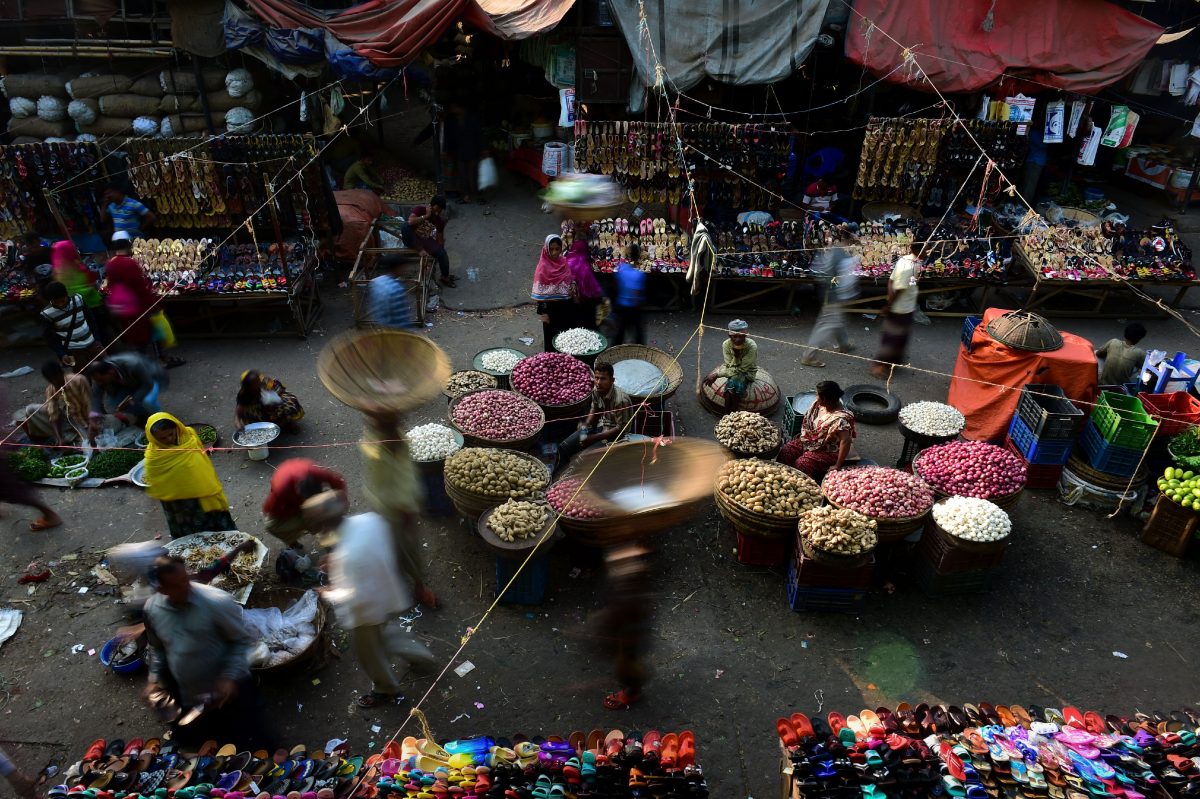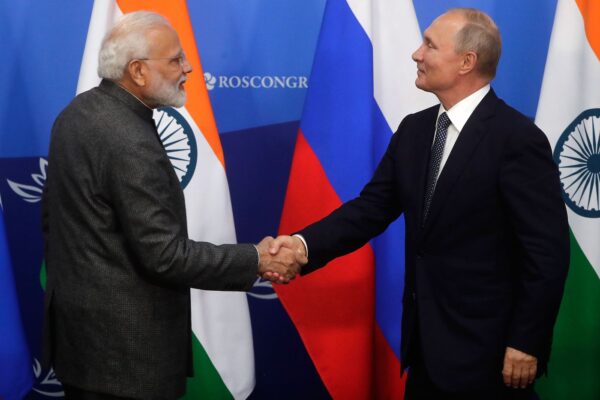China and Russia Challenge the US Dollar
Distressed Patriotic Flag Unisex T-Shirt - Celebrate Comfort and Country $11.29 USD Get it here>>

Commentary
A strong U.S. dollar, rising inflation, and energy costs have provided China and Russia an opportunity to present alternative currencies to developing nations—but moves toward replacing the dollar are weak at best.
Since the Russian invasion of Ukraine, the Bangladeshi taka has lost 25 percent of its value against the dollar. The country is also facing 7 percent inflation and a dwindling stockpile of foreign currency reserves, which have dropped from $48 billion to $37 billion in just about a year. Dhaka is now considering establishing a taka-ruble swap as a way of importing cheap fuel oil from Russia.
In mid-September, Bangladesh Bank, the central bank, announced that it would allow dealer banks to settle trade with China in yuan. Authorized dealers will now be allowed to maintain yuan accounts with their correspondents and branches abroad. Since 2018, the authorized banks have been permitted to open foreign currency clearing accounts with Bangladesh Bank in yuan.
Annual imports to Bangladesh from China amount to between $15 billion and $16 billion, while about $1 billion of goods are exported to China. Consequently, by using Chinese currency, Bangladesh can settle about 10 percent of its imports in yuan, eliminating conversion fees and reducing Bangladesh’s dependence on the dollar. Most likely, there would be a shortage of yuan in local banks. Still, the joint secretary general of the Bangladesh China Chamber of Commerce and Industry, Al Mamun Mridha, suggested that Chinese loans and investments could be deposited in yuan.
Across the border from Bangladesh, the military junta, which seized control of Burma (commonly known as Myanmar) after losing a general election in January 2021, is now considering replacing the dollar with the Chinese yuan, Russian ruble, and Indian rupee. An agreement has already been reached where fuel oil imports from Russia will be paid in rubles. The Mir card, Russia’s electronic payment system, will also be allowed in Burma.

The Shanghai Cooperation Organization (SCO) summit held on Sept. 15-16 in Uzbekistan featured a discussion about expanding trade in local currencies. SCO members include China, India, Kazakhstan, Kyrgyzstan, Russia, Pakistan, Tajikistan, Uzbekistan, and observer countries Afghanistan, Belarus, Iran, and Mongolia. India is already transacting Russian oil purchases in currencies other than the U.S. dollar, and Iran has proposed establishing an SCO currency and an SCO Development Bank.
Although the yuan is the world’s fourth most traded currency, the volume is still small. The yuan accounts for only 3.2 percent of global trade settlement. On the other hand, the dollar accounts for nearly half the world’s trade settlement and 60 percent of global foreign-exchange reserves. China would like to increase the international use of the yuan, while Russia would like to find ways of circumventing U.S. sanctions.
In October 2015, China’s Harbin Bank and Russia’s Sberbank formed the Sino-Russian Financial Alliance to promote trade by facilitating cross-border payments in local currency. So far, the alliance has been joined by 35 members, including 18 Chinese small and medium-sized financial institutions and 17 Russian institutions. The vice governor of Heilongjiang Province, Sun Yao, stated that the alliance was an important component of the China-Mongolia-Russia Economic Corridor. While many large Chinese banks have curtailed the processing of Russian transactions to avoid U.S. sanctions, the small and medium-sized members of the Sino-Russian Financial Alliance continue to work toward greater integration with their Russian counterparts.
Harbin Bank is a member of China’s Cross-Border Interbank Payment System (CIPS), an alternative to the U.S.-dominated SWIFT system. Located in Heilongjiang, which shares a 3,000-mile land border with Russia, the bank can facilitate the transport of yuan to Russia by land or plane. In 2019, a local branch of Harbin Bank successfully delivered $2 million in cash to Russia.
At the BRICS Business Forum in June 2022, Russian leader Vladimir Putin said that the member nations—Brazil, Russia, India, China, and South Africa—should establish a reserve system using a basket of BRICS currencies. Additionally, both China and Russia have at various times suggested establishing a system of local currencies for international trade settlement.

Blocked from dollars and euros, the Kremlin is considering purchasing the yuan, rupee, and Turkish lira for its sovereign wealth fund called the National Wealth Fund or the Wellbeing Fund. However, the governor of Bank of Russia, Elvira Nabiullin, has warned against investing in currencies that are too volatile. All of the BRICS currencies, except the yuan, qualify as volatile.
The lira lost 42 percent of its value in 2021; in July of this year, it dropped to its lowest level since December 2021. The rupee, generally considered an unstable currency, has lost 25 percent of its value over the past eight years, hitting a record low against the U.S. dollar in July. The value of the South African rand has also been steadily declining since May of 2021 and hit a low this year not seen since 2020. As for the Brazilian real, it was considered the world’s fourth-worst performing currency as of June 2022.
Russia and China have attempted to create cross-border payment systems to avoid using the U.S. SWIFT. The Russian System for Transfer of Financial Messages (SPFS), established in 2014, connects with central banks in India, Iran, and China. Although intended as an alternative to the SWIFT, SPFS has only served to facilitate communication between central banks. China’s CIPS has proved similarly ineffective at creating a system free of U.S. influence, as 80 percent of CIPS transactions rely on SWIFT infrastructure.
On the other hand, the SWIFT system covers 11,000 global financial institutions. SWIFT clears transactions through the Fed-owned Clearing House Interbank Payments System (CHIPS), which conducts an average of $1.8 trillion of transactions per day, covering 96 percent of dollar-denominated cross-border payments.
With a motley collection of underperforming currencies from Bangladesh, Burma, Brazil, Russia, India, and South Africa, and two competing cross-border payment systems that do not link with major banks in developed countries, it seems unlikely that China or Russia will be able to lead a significant rebellion against the U.S. dollar.
Views expressed in this article are the opinions of the author and do not necessarily reflect the views of The Epoch Times.





